[AWS
Posted Answer1215
tags:
篇首语:本文由小常识网(cha138.com)小编为大家整理,主要介绍了[AWS相关的知识,希望对你有一定的参考价值。
The gola of an Auto Scaling Group (ASG) is to:
- Scale out (add EC2 instances) to match an increased load
- Scale in (remove EC2 instances) to match a decreased load
- Ensure we have a minimum and maximum number of machines running
- Automatically Register new instances to a load balancer
Atttributes
- A launch configuration
- AMI + Instance Type
- EC2 User Data
- EBS Volumes
- Security Groups
- SSH Key Pair
- Min Size / Max Size / Initial Capacity
- Network + Subnets information
- Load Balancer Information
- Scaling Policies
Auto Scaling Alarms
- It is possible to scale an ASG based on CloudWatch alarms
- An Alarm monitors a metric (Such as Average CPU)
- Metrics are computed for the overall ASG instances
- Based on the alarm:
- We can create scale-out policies (increase the number of instances)
- We can create scale-in policies (decrease the number of instances)

Auto Scaling New Rules
- It is possible to define "better" auto scaling rules that are directly managed by EC2
- Target Average CPU usage
- Number of requests on the ELB per instance
- Average Network In
- Average Network Out
- There rules are easier to set up and can make more sense
Auto Scaling Custom Metric
- We can auto scale based on custom metric (ex: number of connected users)
- Send Custom metric from application to EC2 to CloudWatch (PutMetric API)
- Create CloudWatch alaram to react to low / high values
- Use CloudWatch alaram as the scaling policy for ASG
ASG Brain Dump
- Scaling policies can be on CPU, Network... and can even be on custom metrics based on schedule (if you know your visitor patterns)
- ASGs use Launch configurations or Launch Templates (newer)
- To update an ASG, you must provide a new launch configuration / launch template
- IAM role attached to an ASG will get assigned to EC2 instances
- Having instances under an ASG means that if they get terminated for whatever reason, the ASG will automatically create new ones as a replacement.
- ASG can terminate instances marked as unhealthy by an LB (and hence replace them)
Scaling Policies
Target Tracking Scaling
- Most simple and easy to set-up
- Example: Iwant the average ASG cup to stay at around 40%
Simple / Step Scaling
- When a CloudWatch alarm is triggered (CPU > 70%), then add 2 units
- When a CloudWatch alarm is triggered (CPU < 30%), then remove 1 unit
Scheduled Actions
- Anticipate a scaling based on known usage patterns
- Example: increase the min capacity to 10 at 5 pm on Fridays
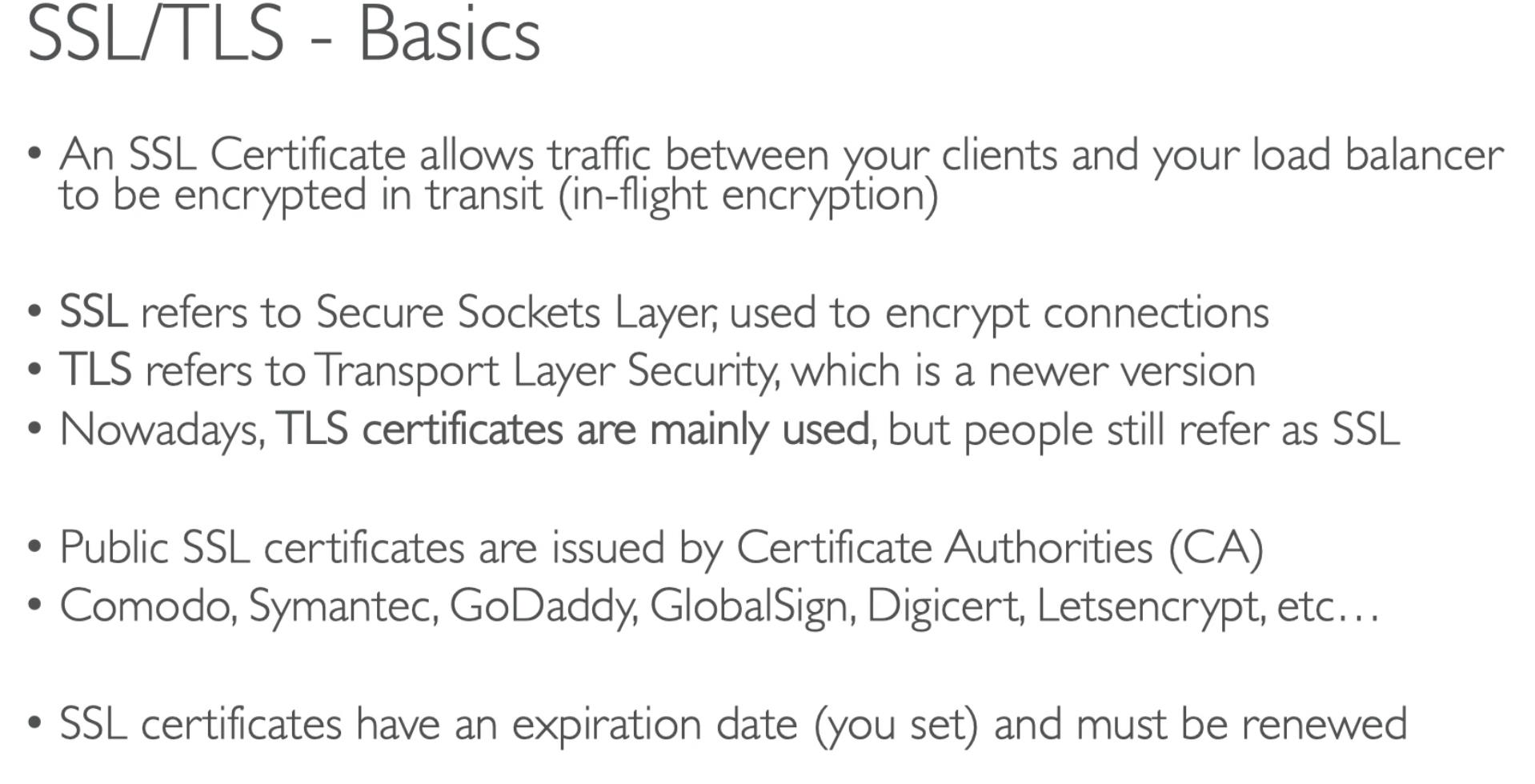
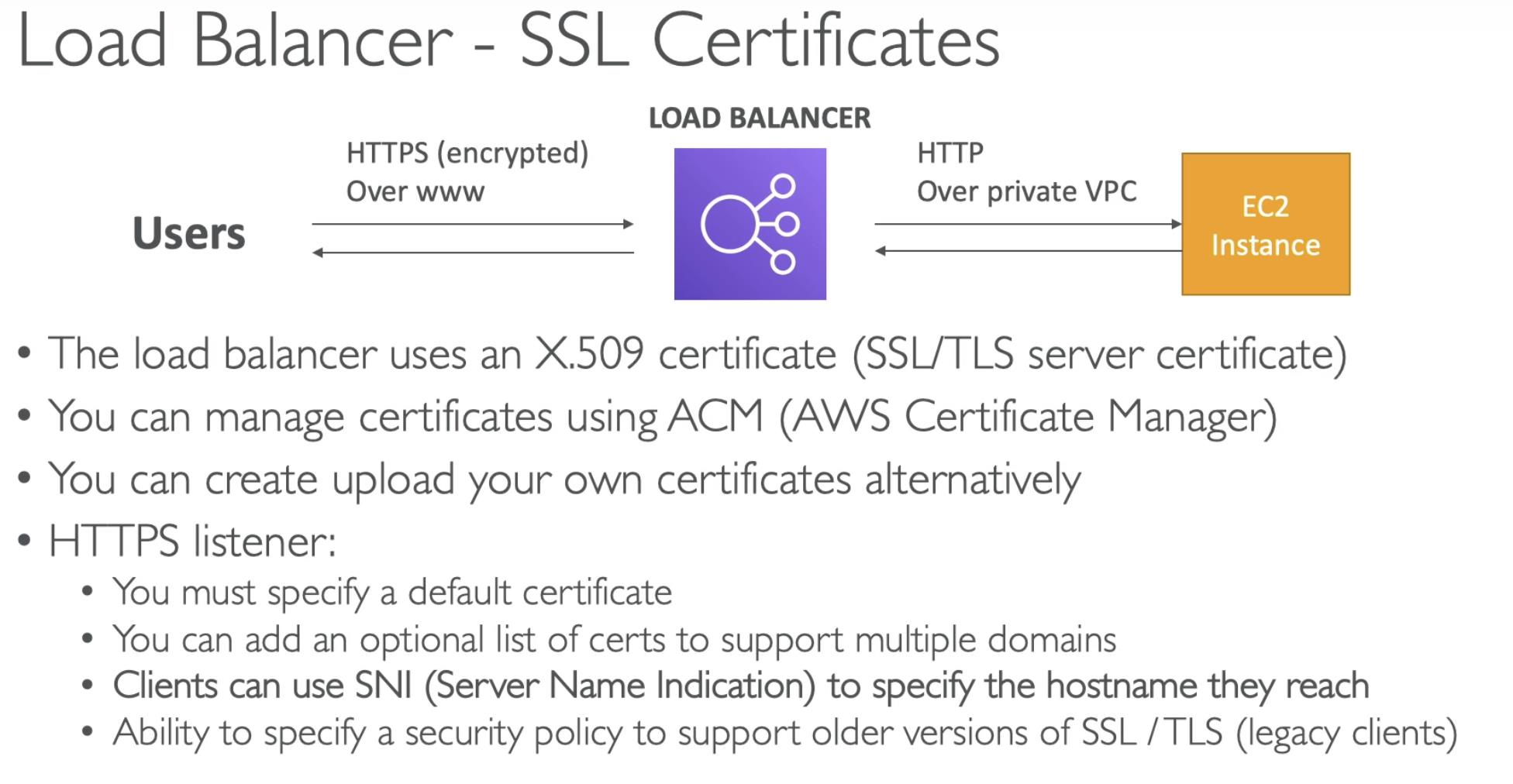
Server Name Indication
- SNI solves the problem of loading multiple SSL cerificates onto one web server (to serve multiple websites)
- It\'s a newer protocol and requires the client to indicate the hostname of the target server in the initial SSL hadshake
- The server will then find the correct certifcate, or return the default one
- Only works for ALB & NLB, CloudFront
- Doesn\'t work for CLB
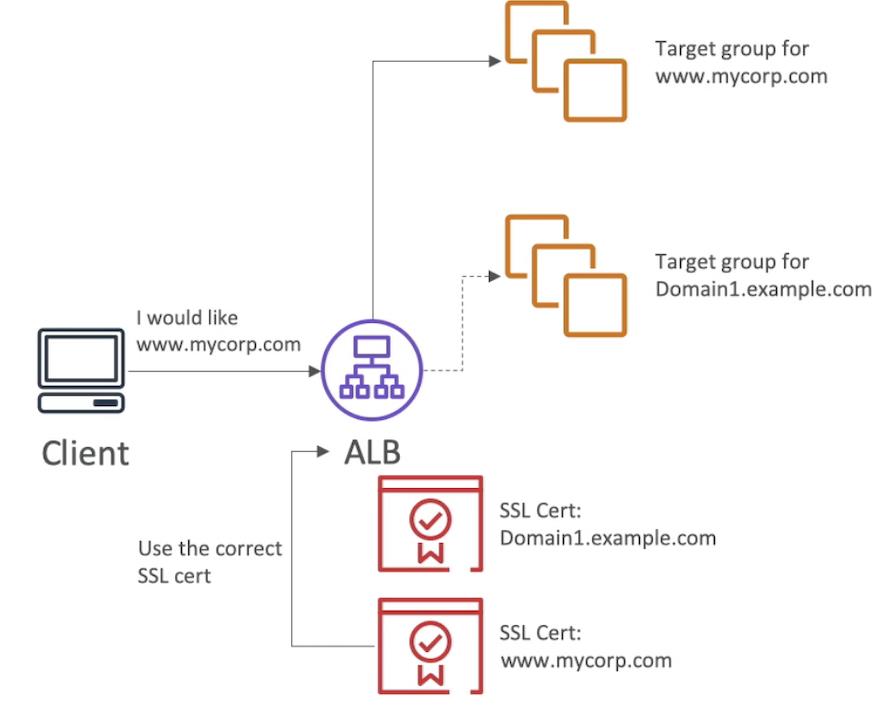
ELB - Connection Draining
- Deregistration Delay for ALB & NLB
- TIme to complete "in-fight requests" while the instnace is de-registering or unhealth
- Stops sending new request to the instance which is de-regsitering
- Between 1 to 3600 seconds, default is 300 seconds
- Can be disabled (set value to 0)
- Set to a low value if your requests are short
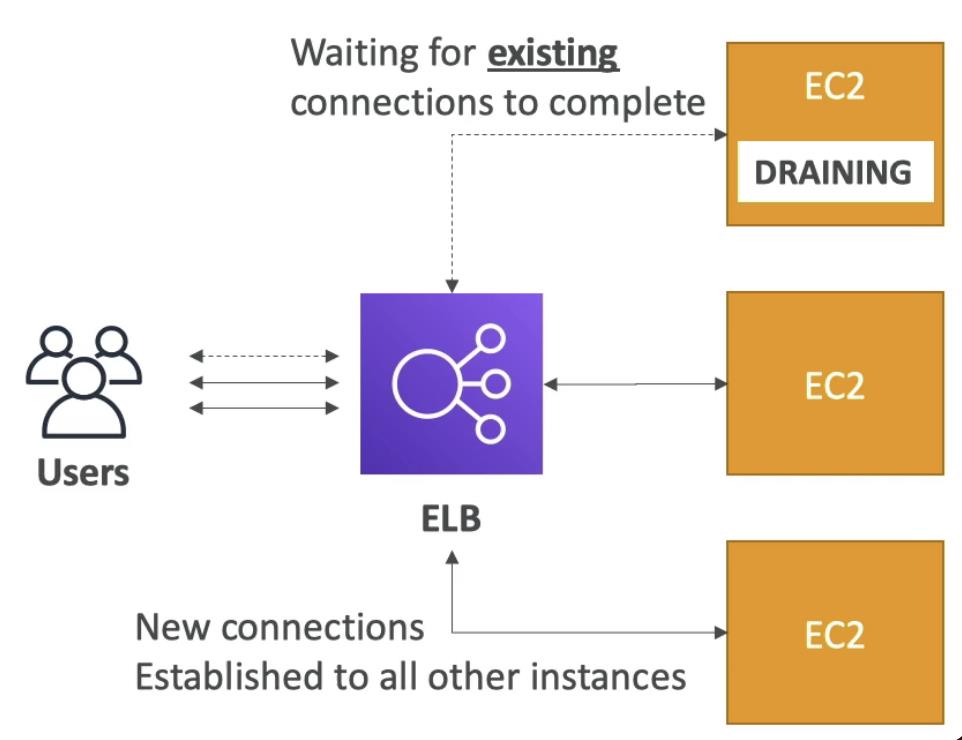
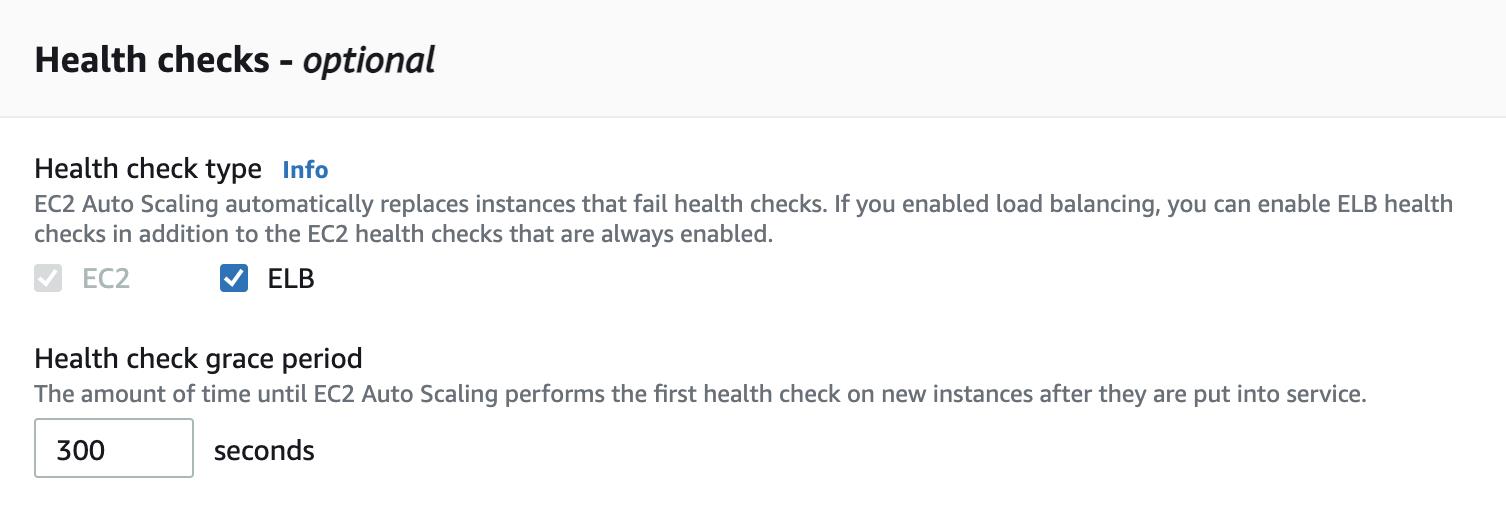
以上是关于[AWS的主要内容,如果未能解决你的问题,请参考以下文章